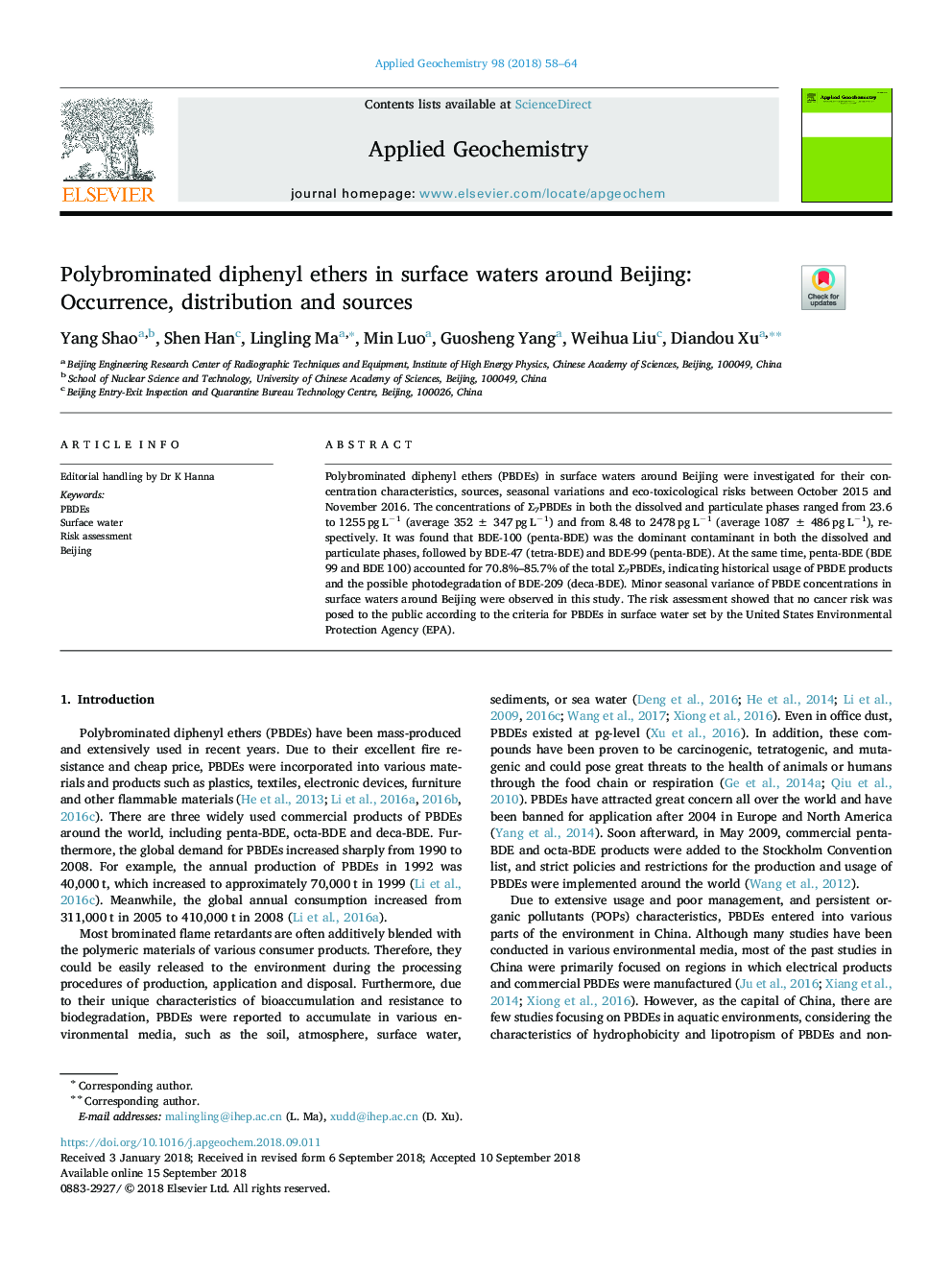| Article ID | Journal | Published Year | Pages | File Type |
|---|---|---|---|---|
| 10223572 | Applied Geochemistry | 2018 | 7 Pages |
Abstract
Polybrominated diphenyl ethers (PBDEs) in surface waters around Beijing were investigated for their concentration characteristics, sources, seasonal variations and eco-toxicological risks between October 2015 and November 2016. The concentrations of â7PBDEs in both the dissolved and particulate phases ranged from 23.6 to 1255â¯pgâ¯Lâ1 (average 352â¯Â±â¯347â¯pgâ¯Lâ1) and from 8.48 to 2478â¯pgâ¯Lâ1 (average 1087â¯Â±â¯486â¯pgâ¯Lâ1), respectively. It was found that BDE-100 (penta-BDE) was the dominant contaminant in both the dissolved and particulate phases, followed by BDE-47 (tetra-BDE) and BDE-99 (penta-BDE). At the same time, penta-BDE (BDE 99 and BDE 100) accounted for 70.8%-85.7% of the total â7PBDEs, indicating historical usage of PBDE products and the possible photodegradation of BDE-209 (deca-BDE). Minor seasonal variance of PBDE concentrations in surface waters around Beijing were observed in this study. The risk assessment showed that no cancer risk was posed to the public according to the criteria for PBDEs in surface water set by the United States Environmental Protection Agency (EPA).
Related Topics
Physical Sciences and Engineering
Earth and Planetary Sciences
Geochemistry and Petrology
Authors
Yang Shao, Shen Han, Lingling Ma, Min Luo, Guosheng Yang, Weihua Liu, Diandou Xu,
